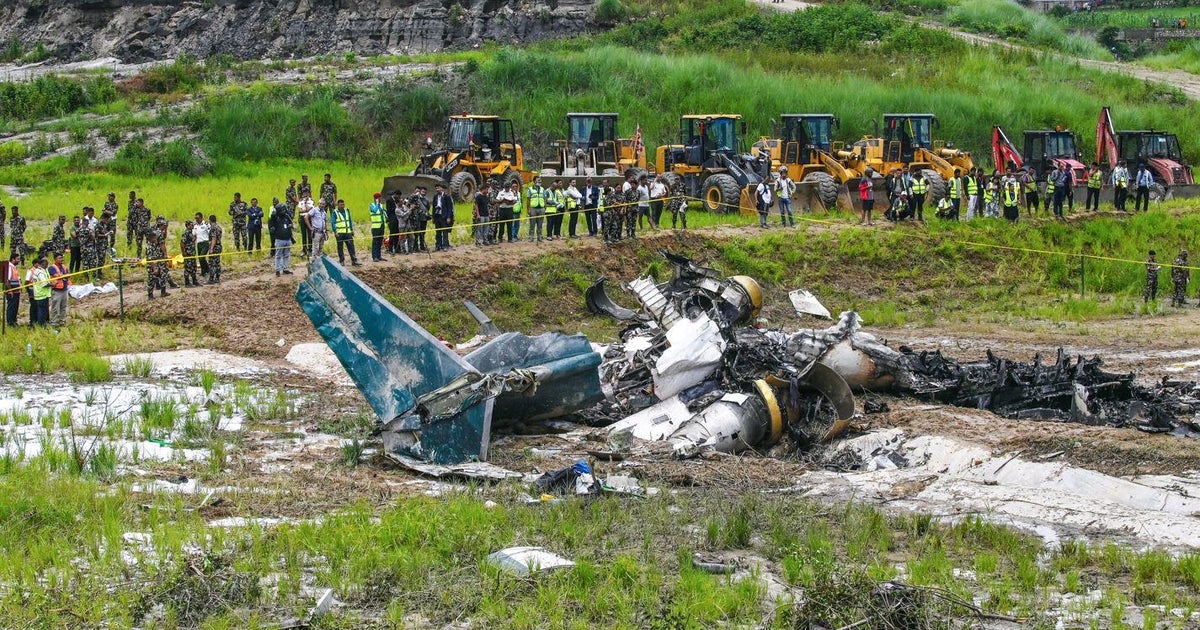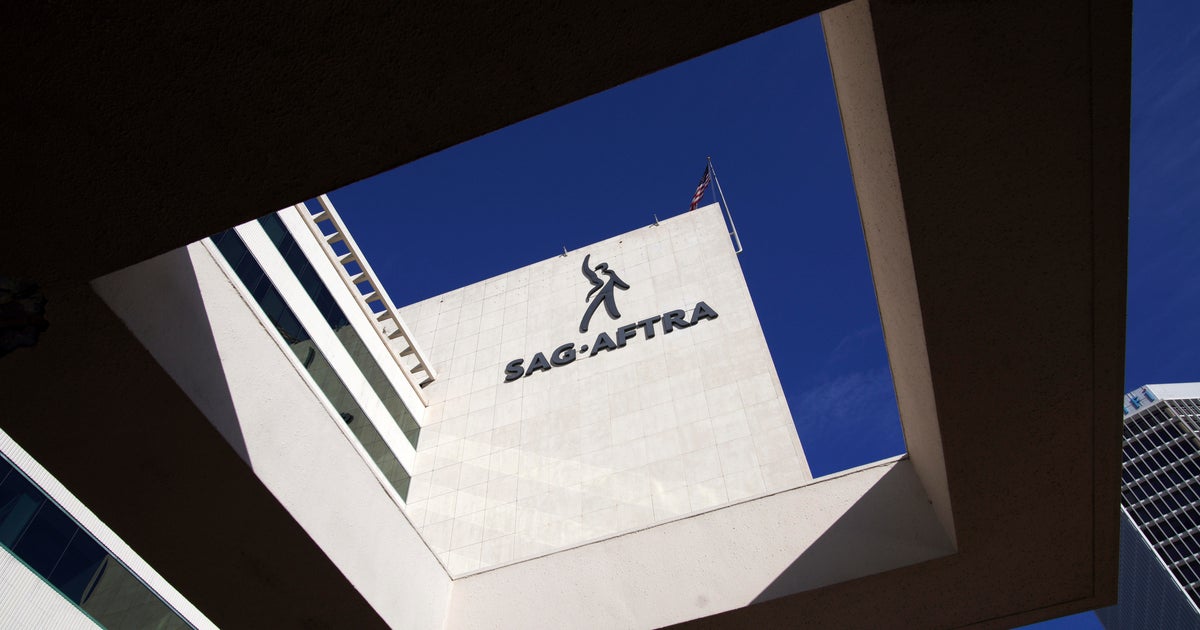"Touchdown declared" on asteroid, NASA probe attempts to collect samples for return to Earth
Playing a cosmic game of tag, a NASA spacecraft extended an 11-foot-long robot arm and descended to the surface of a small, rubble-strewn asteroid called Bennu Tuesday, briefly pressing a collection device into the rocky body in a bold attempt to capture rock and soil samples for return to Earth.
On the way down, moving at a glacial four inches per second, the SUV-size OSIRIS-REx spacecraft had to dodge a towering, building-size mound of rocks known as "Mount Doom" to reach the targeted sample collection site near the middle of a shallow, rock-covered crater dubbed "Nightingale."
Slowly falling with its robot arm extended downward, the spacecraft's pie pan-shaped "touch-and-go sample acquisition mechanism," or TAGSAM, was pressed onto the surface around 6:12 p.m. EDT, four hours and 20 minutes after beginning the descent.
On contact, the probe fired a jet of nitrogen gas around the interior of the 12-inch-wide TAGSAM, stirring up the soil and small rocks underneath and hopefully blowing some of the material into collection filters in the few seconds before the spacecraft reversed course and backed away.
"Touchdown declared," a flight controller announced, watching telemetry from the spacecraft. "Sampling is in progress."
Asked how he felt, principal investigator Dante Lauretta said: "Transcendental. I can't believe we actually pulled this off. ... It's almost hard to process, everything that's happening right now. It's overwhelming pride in this team and everything they've done to get here."
A moment later, the flight controller confirmed "Sample collection is complete, and the back-away burn has executed," prompting another round of enthusiastic cheers and applause as OSIRIS-REx climbed back up into open space.
"The spacecraft did everything it was supposed to do. So we did it. We tagged the surface of the asteroid," Lauretta said. "Kudos to the team. It's an amazing experience. History was made tonight."
With the presumably collected material safely stowed in a re-entry capsule, the flight plan calls for OSIRIS-REx to bid Bennu farewell in March 2021, setting off on a two-year voyage back to Earth. If all goes well, the sample capsule will be released on September 24, 2023, falling back to Earth in Utah where recovery crews will be waiting.
The goal of the $800 million mission is to bring back at least 60 grams of material, or 2.12 ounces — remnants of the original cloud of gas and dust that coalesced to form the solar system 4.6 billion years ago.
Telemetry from the spacecraft confirmed OSIRIS-REx descended to the surface as planned, contacted the rocky soil and fired the TAGSAM's nitrogen charge to stir up the material below the collector. Data from the spacecraft also confirmed the back-away maneuver.
But confirmation rock and soil samples were, in fact, successfully collected was not expected until Wednesday at the earliest, after imagery comes back to Earth showing what might be trapped in TAGSAM's interior. Ultimately, engineers will actually weigh whatever was captured by measuring how the collector's mass changed.
"So years of planning and hard work by this team are essentially coming down to putting the TAGSAM into contact with the surface for just five to 10 seconds," said Mike Moreau, OSIRIS-REx deputy project manager at NASA's Goddard Space Flight Center.
OSIRIS-REx has enough nitrogen gas on board to make three sample collection attempts and if necessary, the spacecraft can try again in January.
Bennu was discovered in 1999 and is about as wide as the Empire State Building is tall. Based on pre-launch observations, OSIRIS-REx planners expected a generally smooth body with beach-like areas and fine-grained material suitable for collection.
But as it turned out, Bennu is so completely covered in rocks, boulders and rocky fragments that suitable collection sites — areas where the TAGSAM would have a reasonable chance of capturing the nickel-size fragments it was designed for — were difficult to find.
While Nightingale turned out to be the most promising of four potential collection sites, it still posed challenges that required the team to beef up the spacecraft's guidance and navigation software, giving OSIRIS-REx the ability to identify and avoid threatening obstacles and steer itself to a more precisely-targeted collection point.
The modified flight control software was critical because OSIRIS-REx and Bennu currently are on the other side of the sun, so far away that radio signals need more than 18 minutes to cross the gulf. That ruled out any sort of realtime control from Earth.
While not as nerve-wracking, perhaps, as the high-speed entry, descent and landing of a Mars probe, which is only half-jokingly known as "seven minutes of terror," the autonomous OSIRIS-REx sample collection maneuver had more than enough drama for mission managers, engineers and scientists.
But after two dress rehearsals that took the spacecraft to within 120 feet of Bennu's surface earlier this year, the team was confident OSIRIS-REx was up to the challenge.
"I'm not thinking of this as seven minutes of terror," said Beth Buck, mission operations manager for spacecraft builder Lockheed Martin. "This is much more of a four-and-a-half hours of mild anxiousness."
Mission managers warned it will take several days to determine how much material, if any, was actually captured in Tuesday's collection try. The spacecraft has enough nitrogen on board to make up to three attempts.
"In spite of the incredible perseverance this team has shown ... we may not be successful on our first TAG attempt," said Kenneth Getzandanner, OSIRIS-REx flight dynamics manager at Goddard. "For that reason, our team is fully prepared to make a second attempt at our backup site in January if it's necessary."
The OSIRIS-REx spacecraft — an acronym that stands for Origins, Spectral Interpretation, Resource Identification, and Security-Regolith Explorer — was launched from Cape Canaveral on September 8, 2016.
The spacecraft slipped into orbit around Bennu on December 3, 2018, kicking off nearly two years of close-range observations to map its surface in extraordinary detail using an advanced camera, two mineral sniffing spectrometers, a laser altimeter and a student-managed X-ray imaging system.
Bennu is roughly spherical, has a diameter of about 1,614 feet and an estimated mass of about 85.5 million tons. It rotates once every 4.3 hours and takes 1.2 years to complete one trip around the sun at distances ranging from 126 million miles to 83 million miles. It is an almost black, B-type asteroid with a density similar to coal.
Bennu is listed as a potentially hazardous near-Earth asteroid because its orbit can carry it within five million miles of Earth's orbit and it is large enough to survive atmospheric entry. Observations indicate a slight 1-in-2,700 chance Bennu could impact Earth between 2175 and 2199.
One of the goals of the OSIRIS-REx mission is to learn more about the structure and composition of such near-Earth asteroids to help engineers devise methods for diverting or breaking up any such bodies that might one day threaten Earth.
As the mission's name implies, returning samples from Bennu, along with extensive remote-sensing data, also will shed light on how the sun's retinue of planets, asteroids and comets formed and, by extension, how other solar systems evolved.
"Asteroids are relics of the earliest material that formed the planets in our solar system, and they hold key information to unlocking our understanding of how the solar system formed and how it evolved," said Lori Glaze, director of planetary science at NASA Headquarters.
"Missions like Osiris Rex ... are addressing major components of asteroid science, as well as advancing NASA's planetary defense efforts to help us better prepare for how to respond to asteroids that may threaten Earth in the future."







